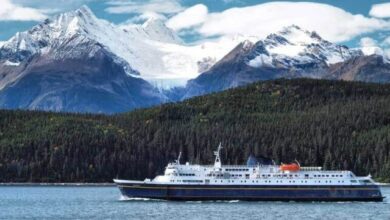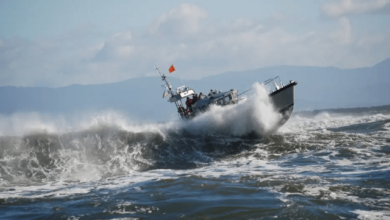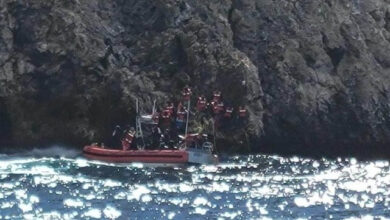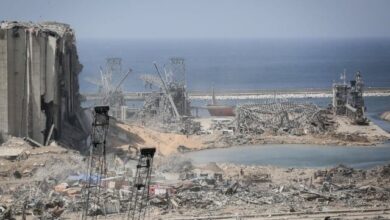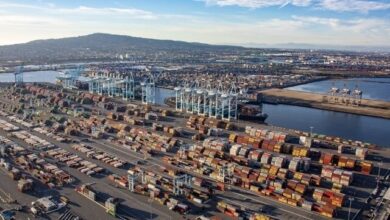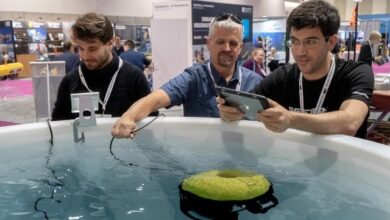Ports : Contractors selected to construct the quays in the Amalia Harbour

The Port of Rotterdam Authority has, after completing a European tendering procedure, awarded the construction of some 2.4 kilometres of quays and earth-retaining walls in the Princess Amalia Harbour to the HOCHTIEF, Ballast Nedam and Van Oord contractor consortium
The decision marks the start of the further development of the harbour located on Maasvlakte II, which will increase annual throughput capacity in the port of Rotterdam by four million standard containers (TEU).
Impression of the new quays in the Prinses Amaliahaven
“Particularly because of e-commerce, container volumes are increasing sharply,” explains Boudewijn Siemons, chief operating officer of the Port of Rotterdam Authority. “That will continue for the time being. To further strengthen our leading position as Europe’s largest container port, we are now responding to this development by investing in the further expansion of the Princess Amalia Harbour. This is an investment that will boost the competitive position of our customers and of Rotterdam.” The potential additional container traffic of 4 million TEUs is equivalent to an increase in capacity of about 28 percent over the 2020 annual total.

Public waiting area
Container terminals APM Terminals and RWG are already active in the Princess Amalia Harbour, with 1,500 and 1,700 metres of quay respectively. The construction of new deep-sea and inland shipping quays will allow these companies to develop the other sites around this harbour in time. Both terminal operators have already signed the relevant options. The project also includes the construction of a 160-metre waiting area for general use by inland shipping vessels.
The new building work will be on either side of the harbour, which is approximately 2.5 kilometres long. This total will include 1,825 metres of deep-sea quay, 160 metres of inland shipping quay and 360 metres of soil-retaining walls. Barring 725 metres, this means that the entire harbour basin, which went into use in 2015, will be enclosed. The completion of the first 500 metres of quay wall is expected in late 2022. The final part of the project will be completed no more than eighteen months later.
Rear crane track
In addition to the construction of the quays, which will have a retaining height of 29 metres, the work also involves dredging the quays to a depth of more than 20 metres below sea level. In addition, a rear crane track will be built on piles over a distance of approximately 1.8 kilometres for the rear legs of the container cranes that will be used here.
The quays will be state-of-the-art. For example, they will be fitted with a wide range of sensors to monitor forces and any deformation. In addition, ECOncrete blocks will be used at two locations to act as artificial reefs and encourage biodiversity below the water.
Safety and sustainability
Siemons: “We are looking forward to working with HOCHTIEF, Ballast Nedam and Van Oord on the basis of the values we share with them in terms of safety and sustainability.” Dirk Osthus, HOCHTIEF Managing Director: “We are proud to take on this challenging project as a building consortium. Our work will be a demonstration of the Rotterdam mentality: practical and effective.”
“By looking at the project from the perspective of a range of disciplines and working with partners in the chain, a variety of solutions were elaborated to come up with the most sustainable and efficient working method,” adds Ronald de Geus, managing director of Ballast Nedam Infra Projects. “For example, we will be reducing disruption in the local area by bringing in most of the construction materials by water. That allows us to ensure that the operations of the container terminals can continue interrupted during the course of the project.”
“We are paying particular attention to reducing emissions during the operation,” says Mark van der Hoeven, Netherlands director with Van Oord. “By deploying equipment powered by Hydrotreated Vegetable Oil (HVO)*, as well as electric construction equipment, we are fully in line with the Port Authority’s ambitions to significantly reduce harmful emissions.”
*HVO fuel leads to a reduction in carbon emissions of 89 percent by comparison with diesel and it also produces lower emissions of particulate matter, nitrogen and sulphur.
press release



